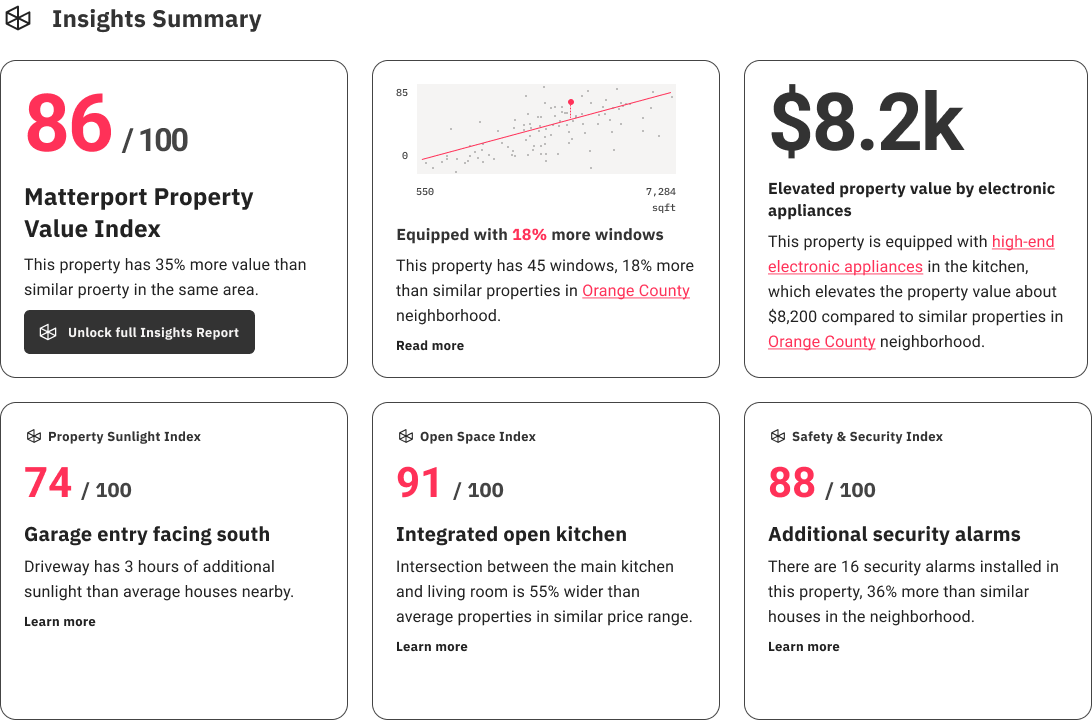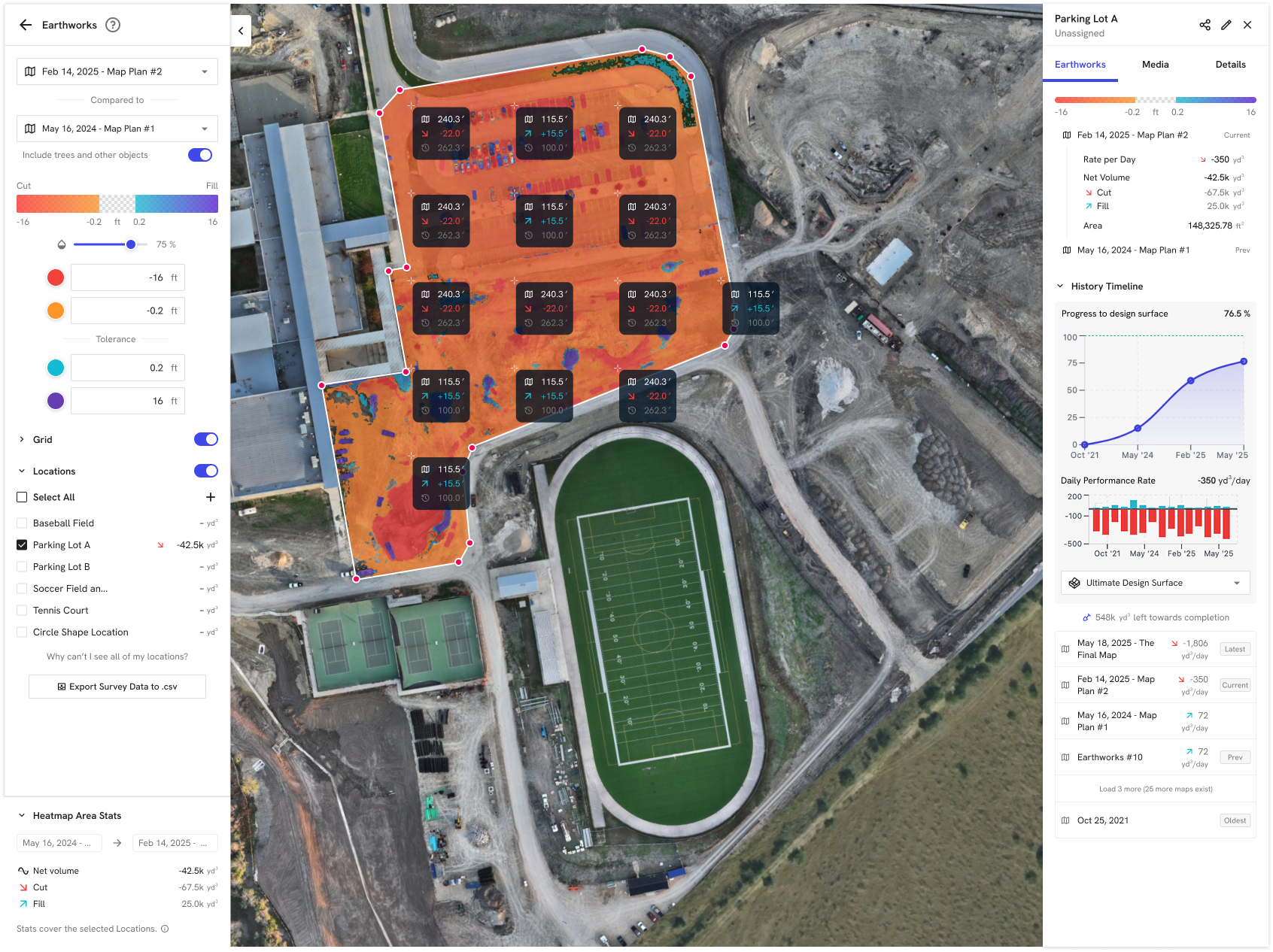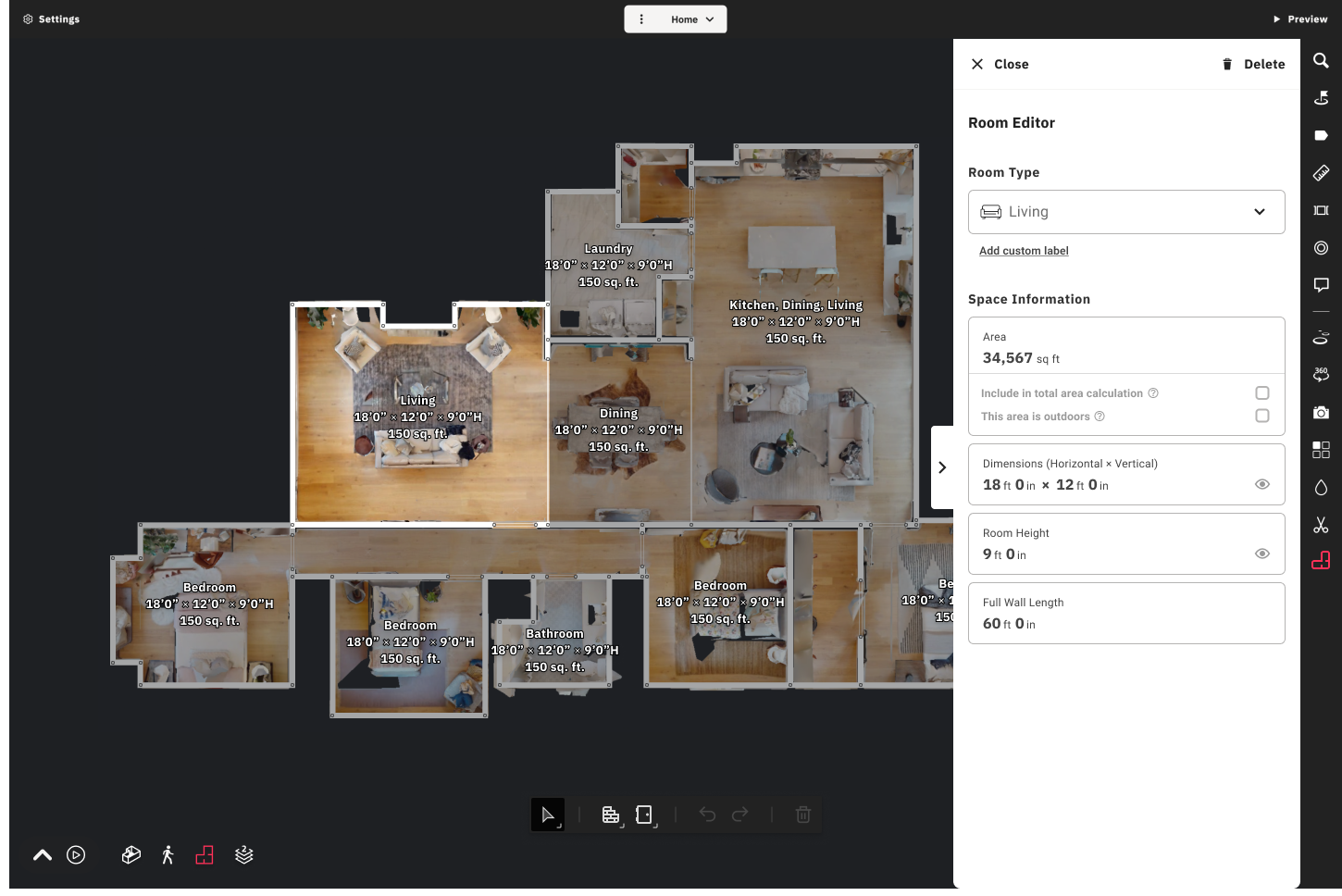Overview
Matterport Property Report analyzes data gathered during the property scan and produces insightful reports for the property. Users can access detailed industry-standard property reports that include summaries of their spaces and room-by-room breakdowns of area and dimensions.
Target Users
- Real estate agents
- Homeowners
Problems to Solve
Real estate agents often spend a significant amount of time on the Multiple Listing System (MLS) when listing a property for sale. This process involves dealing with tedious data and facts that are not easily accessible. Many agents still resort to printing deeds and documents, which may contain inaccuracies. Unaware of the errors, they end up manually inputting the information into the system.

Matterport Property Report provides room dimensions and floor plans with great accuracy, already assisting in reducing listing time for agents. Furthermore, the report will continue to expand with additional information such as appliances, wall colors, and neighborhood benchmarks.
It also helps homeowners in making better decisions by offering deeper insights based on data. A considerable amount of valuable information often escapes property owners attention, as rendering a comprehensive picture with a vast dataset is always challenging. Matterport Property Report gathers property data, analyzes it, and provides meaningful insights in an instant.
Goals
Matterport Property Report ultimately aims to achieve two things:
-
Save time and resources for real estate sellers by becoming a single source of truth for each property.
-
Provide additional insights into individual properties and assist in the homeowners’ decision-making process.
Process
Initially, we put emphasis on providing comprehensive benchmark reports to offer deeper insights into the properties. Therefore, the initial exploration and design direction was closer to a dashboard.



While this remains a valid direction to date, benchmark reports required extensive research and validation. To expedite progress and achieve quick wins, we shifted our priorities to saving real estate sellers' time and resources, deferring benchmark analyses to later phases.
In addition to the complexity of benchmark reports, we encountered another interesting challenge—defining neighborhoods. An example here—when users wanted to compare properties in New York, it wasn't easy to determine their exact intent. Did they want to compare New York City only? Should we include Jersey City or Upstate New York? How should we define the New York metropolitan area? Should it include Long Island? Users typically didn't mean administrative districts when specifying certain areas. Unlike Zillow, which manually classified all areas to enhance search relevance, we aimed to avoid excessive resource allocation for address classification.

The design focus shifted to conveying a number of data entries with legibility, primarily to assist real estate agents in their listing process. However, we also discovered that agents desired the ability to produce informational documents for their potential clients. Once again, we adjusted our concept and concentrated on finding a sweet spot between a fact sheet and informative material for potential homebuyers.



We found that floor plans and room dimensions were among the most important pieces of information in traditional disclosure reports. We set our MVP to deliver these two components.

Outcome and Future Roadmap
We successfully delivered the MVP in September 2023 through a private beta program. We gained our initial 250 beta users in a day and ended up with 3,225 participants over the course of the beta period. The interactive floor plan in the Property Report drove the sales of traditional schematic floor plans with significant numbers. The general availability (GA) is scheduled for early 2024.








